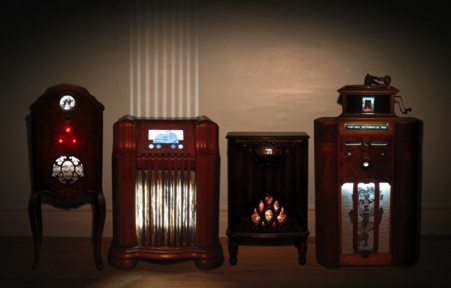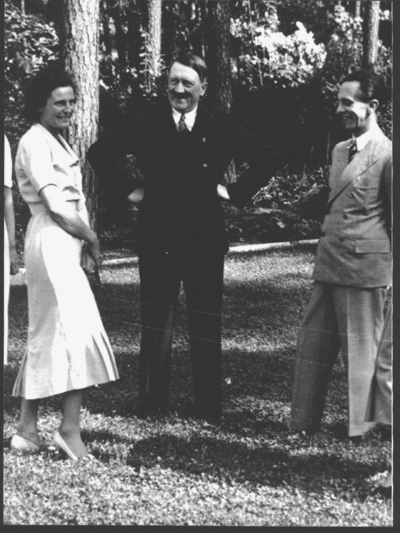NOTES FROM THE 20 th: Walter (detail)
Jacquard digital tapestry: 9/11/73

Freda Guttman, native of Montreal, has worked as a printmaker, photographer and laterally, as an installation artist. In more than forty years of active research and practice, her work has been featured in numerous solo and group exhibitions in Canada, the United States and internationally. The writings and the life of Walter Benjamin have served as a template for her recent works, five installations, globally entitled “Notes From the 20 th”, in particular his theories of the phantasmagoric myths of history as progress, from which we must awaken in order to free ourselves from endless cycles of violence and despair.
ARTIST STATEMENT
What was it, Ernst, that your shadow unwittingly said
Did the small child see something horrid in the woodshed Long ago?
W. H. Auden
Just as Proust begins his life story with the moment of awakening, so every presentation in history must begin with awakening; in fact it should deal with nothing else.
Walter Benjamin
In 2004, I completed a project begun in 1994, a continuum of five installations globally entitled, Notes From the 20 th. These works are about being human in the 20 th century, a particularly violent and brutal one hundred years. As well, they represent an attempt to understand how and why the present condition of the world is so much a repetition of the past.
I began with an exploration of the ways in which my small life has been determined by the contingencies of my birth - the time, the place, my gender, class, the fact that I am Jewish - as well as by the historical forces which were a background to my childhood. (I was born in 1934, in Montreal).
As the project progressed, I was drawn more and more to the life and work of Walter Benjamin. I saw in his methodology of the study of history, a way that I might attempt to achieve my goals, albeit, in a visual language. While nourished by his ideas, it also became important to me to include aspects of his individual life. Considered by many to be one of the great thinkers of the 20 th century, Benjamin was also one of its many victims. His view of history as one unending catastrophe that necessitates an awakening on our part, speaks to us ever more painfully as we descend blindly into the 21st century. The fourth and fifth installations of Notes From the 20 th, In Memoriam and Walter mourn his life of exile and loss, cexplores the richness of his thought, and hopefully conveys some of the lessons of his works, needed now more than ever.
NOTES FROM THE 20 th: Walter (detail) Jacquard digital tapestry: 9/11/73 |
 |
Both Cassandra: An Opera In Four Acts, the first of the 20 th century works, and To Archive The Shape Of Memory, the second, are meant to be reconstructions of both personal and historical memory, and how they are woven together. I wished, as well, to point to the processes by which technologies of representation and the passage of time mediate and (re)construct the narratives of our lives and of history itself. In these two works I have overlaid my own history, that of a Jewish child growing up in Montreal in a patriarchal family structure, onto the concurrent events of world history which so coloured my childhood. I examine my own internalizations of experiences such as hearing the terrifying voice of Hitler on the large upright radio in our home in Montreal as well as my father’s reaction to it. The twentieth century phenomenon of the enthrallment of masses of people by a leader such as Hitler, in particular haunts me. Perhaps because I am Jewish and grew up during World War II, I was aware that things could and did happen that were terrifying and even apocalyptic. I was aware, too, at some level of consciousness, that authority, power, and violence could be fascinating, dazzling.
In the works, To Archive The Shape Of Memory, and Monotony Is Nourished By The New, I have used a device called Anamorphosis, an early Renaissance European advance in the metaphysics of optics. Drawings or paintings were executed in a mathematically determined distortion. The images could then be magically restored to their true perspective within the infinite depth of a cylindrical mirror, or if the viewer positioned her/himself at a fixed point of ‘truth’. Thus the viewer actively seeks out a moment of recognition, perhaps a moment of what Benjamin called ‘awakening’.
NOTES FROM THE 20 th: Walter (detail) ** 4 old upright radios, video, light, old phonograph, etc. |
 |
The fourth installation, In Memoriam, consists of three large, upright wooden radios, emptied of their inside mechanisms, approximately 26 inches wide and 42 inches in height The radios are typical of those of the 1930’s and ‘40’s – like pieces of furniture made for a bourgeois parlour, replete with beautiful inlays and shaped and pressed wood parts. These radios which date from Benjamin’s era, and mine when I was a child, and are meant to have a metaphorical role - standing as presences, speakers, ghosts of the past, warning voices that remember Walter Benjamin’s life and work, and remind us of his prescient understanding of the revolutionary significance of new technologies, as well as their impact on the production of art. The material covering the speakers are replaced by jacquard woven pieces, while in each of the upper apertures of the three radios, the identical video of fire burning is seen. The same video of fire is projected large onto a screen behind the radios, as a backdrop to them.
NOTES FROM THE 20 th: Walter (detail) TV with diorama: Reading in the Ruins |
|
Walter consists of a grouping of four large upright radios and a hand-cranked phonograph which present by way of light structures, videos, and sound elements, a sampling of Benjamin’s thought, portraits of him at various stages of his life and the memorial to him at Port Bu, Spain, where he died. Another piece, an emptied old television is a layered paper diorama of Benjamin reading in the ruins of a public library partially destroyed by a bomb. Two of the four digital Jacquard weavings which complete this installation, refer to key events of the twentieth century: the bombing of Dresden and the coup of 1973 in Chile. One is of Walter Benjamin, the Angel of History on his shoulder and the last is of Leni Riefenstahl with Hitler, a reference to the question of the responsibility of artists.
NOTES FROM THE 20 th: Walter (detail) Jacquard digital tapestry: Leni |
 |
All images © Freda Guttman